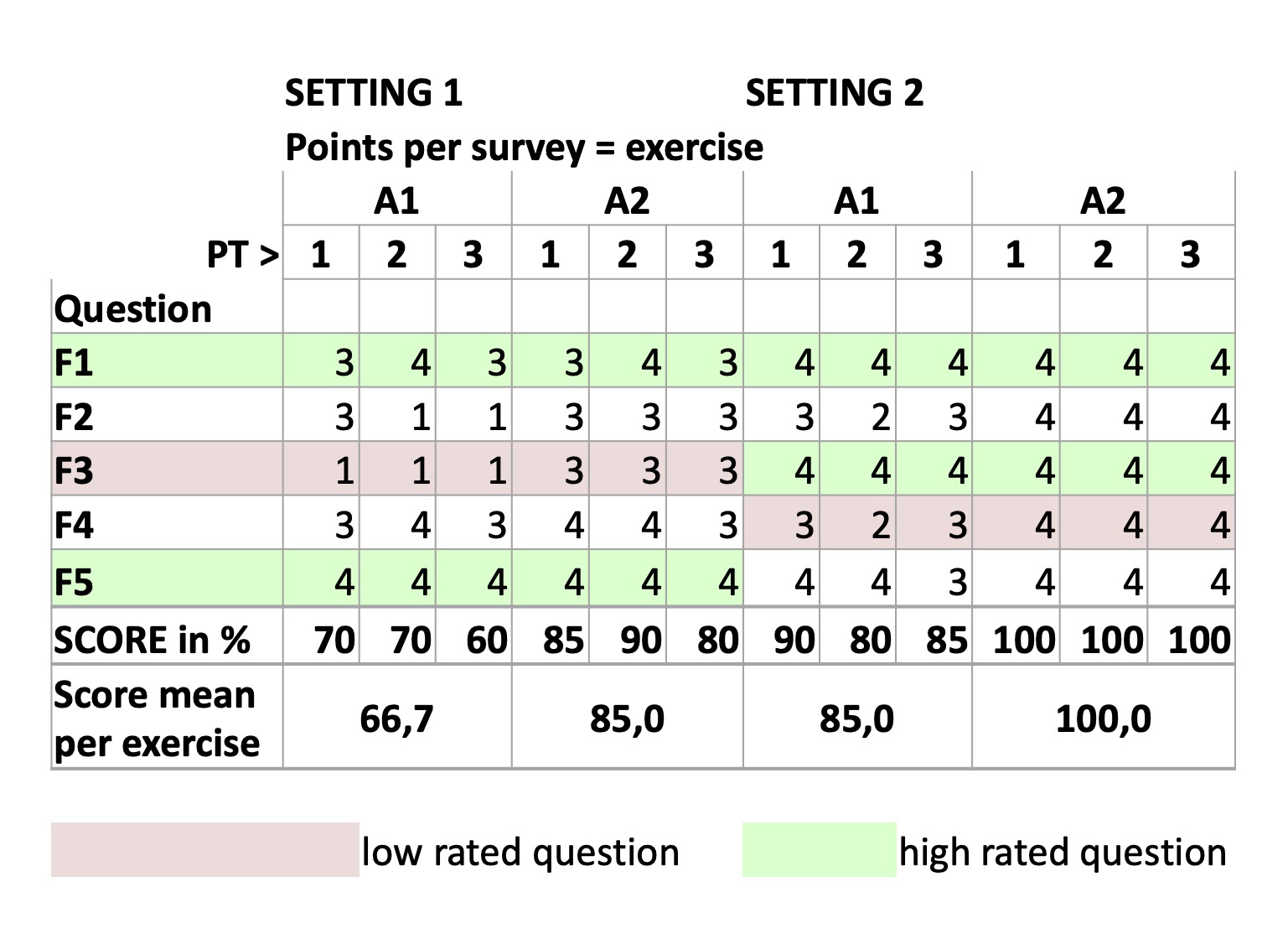Technological Framework for Telerehabilitation / -prevention in Physical Therapy: Feasibility and Usability in the Field of Therapeutic Exercises
Aim and Research Question(s)
The COVID 19 pandemic`s impact on telehealth [2] forced physical therapy into a shift away from face-to-face sessions to remote teletherapy. As there are no technical or other standards for the delivery of teletherapy yet, the aim of this thesis is to gain knowledge by answering the research question whether a standardized technical setup of hardware components was suitable for supervision in physical teletherapy.
Background
Teletherapy during the COVID-19 pandemic and after is facing challenges: physical therapy focuses on 3-dimensional movement of the human body, but available and affordable real-time videoconferencing provides only a 2-dimensional representation. In addition, the current standards for cost reimbursement by insurance carriers are hardly transferable to teletherapy. The need for scientific research on these issues is increasing.
Methods
A pilot study to evaluated a prototype stand system (TelePrevApy) for teletherapy conducted. The system consisted of three IP cameras plus common laptop for video communication (Figure 1).
 Figure 1: TelePrevApy stand setup for available space 3.80 x 2.80 m
Three exercises per session were instructed, two different camera settings were evaluated. Values for usability as well as for rating the best suitable camera positioning were obtained via modifications of the System Usability Scale [1].
Figure 1: TelePrevApy stand setup for available space 3.80 x 2.80 m
Three exercises per session were instructed, two different camera settings were evaluated. Values for usability as well as for rating the best suitable camera positioning were obtained via modifications of the System Usability Scale [1].
Results and Discussion
The results for usability were consistent for client and expert rating. The threshold of 73 % for good usability, was reached in both user groups (clients: 75,6 % mean, experts: 79 % mean). For camera positioning the results were not explicitly decisive, a preferred setting per exercise showed in the scores per therapist (Table 1).
 Table 1: Example comparison of the scores for camera settings 1 and 2 of the number-coded exercises A1 + A2
Table 1: Example comparison of the scores for camera settings 1 and 2 of the number-coded exercises A1 + A2
Conclusion
The pilot study confirmed that specific setups of a ready-to-use therapy stand system can be defined for teletherapy. To strengthen the scientific statements of the work, studies with larger samples are necessary and further research questions aiming at alternative digital possibilities as well as at the applicability of therapeutic measures in teletherapy are to be asked.
References
[1] Bangor, A., Kortum, P. T., & Miller, J. T. (2008). An Empirical Evaluation of the System Usability Scale. International Journal of Human-Computer Interaction, 24(6), 574–594. [2] Kletečka-Pulker, M., Völkl-Kernstock, S., Fassl, A., Klager, E., Willschke, H., Klomfar, S., Wochele-Thoma, T., Schaden, E., & Atanasov, A. G. (2021). Telehealth in Times of COVID-19: Spotlight on Austria. Healthcare, 9(3), 280.